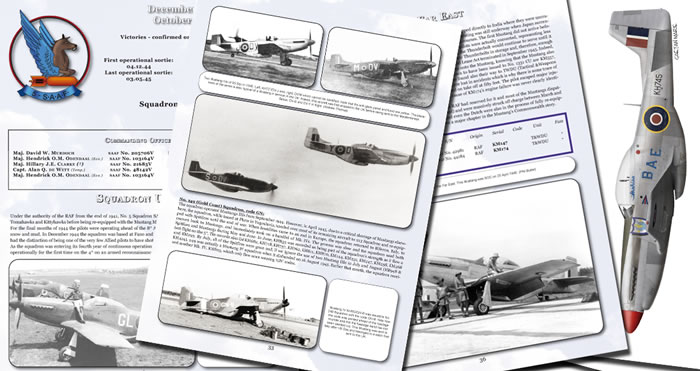S u m m a r y : |
Catalogue Number: |
Squadrons! No.12 – The Supermarine Spitfire Mk.XVI The British
ISBN: 978-2918590-86-6 (Paperback)
ISBN: 978-2918590-87-3 (e-book/e-pub/kindle)
By: Phil H. Listermann |
Contents & Media: |
Soft Cover, A4 portrait format, US Trade Paper Binding, 40 pages, 30 photos & 5 colour profiles. Also available in PDF, EPUB and SRC digital format. |
Price: |
Digital format available on-line from RAF-In-Combat.com for €9.95 for PDF, €6.50 for EPUB & PRC, and US$13.95 for Paperback. |
Review Type: |
First Read. |
Advantages: |
Easy to read operational histories with unit, personnel and individual aircraft data made clearly accessible. |
Disadvantages: |
None noted. |
Conclusion: |
This series is quite specialized in nature with its focus firmly on squadron usage - hardly surprising given the series’ title! The booklet gives a good insight into the Spitfire Mk.XVI’s British service until the war’s end in Europe, as well as interesting accounts of the operational experiences of those who flew it. I recommend it to Spitfire aficionados. |
Reviewed by Mark Davies

HyperScale is proudly supported by Squadron
The Spitfire XVI was essentially the same as a Mk. IX powered by an American built Packard engine. Its introduction in late-1944 coincided with increasing allied air superiority, and so it was used predominantly in the fighter-bomber role using the low-altitude rated Merlin 266 (Packard’s equivalent to Rolls Royce Merlin 66). Built alongside MK IX’s on the production line, it shared the same changes as the C-wing quickly gave way to the E-wing (plus clipped tips optimised for low-level manoeuvrability), and later cut-down rear fuselage and teardrop canopy.
The Mk. XVI operated from the UK with Fighter Command or the continent with the 2 TAF. One of the main tasks given to the MK. XVI would be the destruction of the V-2 sites located in Holland. The book reviewed here details of the operations carried out by the British squadrons operating the type.

It is a good thing to have a publication dedicated to the RAF’s late-war use of this Spitfire variant; and seemingly, from ‘The British’ adjunct to the title, we may expect a volume dealing with other nations’ use of the Mk.XVI.
This is the twelfth in a series from Phileditions, all of which follow a similar format; in this case this being:
-
Glossary – Personnel, Ranks, Other, and Fighter Command Offensive Operation Codenames.
-
The Spitfire Mk, XVI – Brief development history and production serial numbers.
-
Squadron Usage – Operational accounts, claims and summaries of aircraft lost on operations and to accidents. Covering Nos. 66, 74, 127, 229, 602 and 603 Squadrons, with other fighter and second line units; until, but not beyond, the summer of 1945.
-
In Memoriam – Pilots killed flying the Spitfire Mk.XVI.
The book features 30 photographs, most good, featuring the Spitfire Mk XVI, and several with just aircrew. At the end are five nicely rendered full-page colour profiles.
The book is available in four formats; printed paperback, or in three digital formats downloadable from the publisher and others. The printed example’s quality of production is good, although on matt paper. I cannot comment on the appearance of the digital formats.
This series is quite specialized in nature with its focus firmly on squadron usage - hardly surprising given the series’ title! The booklet gives a good insight into the Spitfire Mk.XVI’s British service until the war’s end in Europe, as well as interesting accounts of the operational experiences of those who flew it.
I recommend it to Spitfire aficionados.
Thanks to RAF-In-Combat.com for the review samples.
Review Copyright © 2016 by Mark Davies
This Page Created on 18 July, 2016
Last updated
18 July, 2016
Back to HyperScale Main Page
Back to Reviews Page

|
